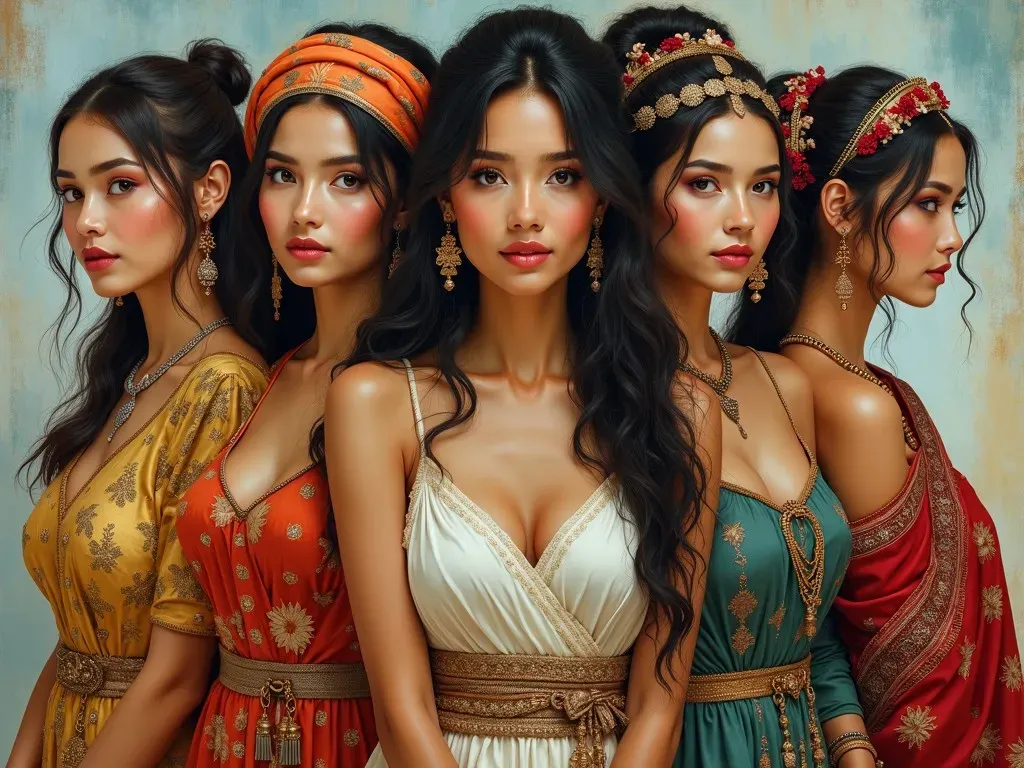famous paintings of women celebrate the beauty and complexity of femininity through time. From classical masterpieces to modern interpretations, these artworks showcase various styles, Techniques, and cultural reflections tied to women.
Notable Periods and Movements in Art Featuring Female Subjects
Renaissance Era
The Renaissance brought forth a resurgence of interest in the beauty of human form, especially that of women. Some of the most Famous Paintings from this period include:
| Title | Artist | Year | Notable Features |
|---|---|---|---|
| Birth of Venus | Sandro Botticelli | 1484-1486 | Captures the goddess Venus emerging from the sea, symbolizing beauty and love. |
| Mona Lisa | Leonardo da Vinci | 1503-1506 | An enigmatic portrait of a woman, known for her mysterious expression. |
| Lady with an Ermine | Leonardo da Vinci | 1489-1490 | A portrait of Cecilia Gallerani holding an ermine, showcasing grace and elegance. |
Modern Art
Modernity expanded the scope of how women were depicted in art, reflecting societal changes and evolving perceptions of femininity.
| Title | Artist | Year | Notable Features |
|---|---|---|---|
| Woman I | Willem de Kooning | 1950-1952 | A vibrant and abstract representation of a woman. |
| The Two Fridas | Frida Kahlo | 1939 | A dual self-portrait that reflects Kahlo’s identity and emotions. |
| Olympia | Édouard Manet | 1863 | A bold portrayal of a nude woman, challenging traditional representations. |
Famous Female Portraits Through the Ages
From historical depictions to contemporary artworks, here are some key female portraits that left a mark in art history:
Classical Paintings
- The Creation of Eve by Michelangelo (1512): Depicts God creating the first woman, beautifully illustrating the relationship between sexes.
- Portrait of a Lady by Gustav Klimt (1895): An ornate and intricate depiction, emphasizing femininity and luxury.
Contemporary Iconic Paintings
- Self Portrait with Thorn Necklace and Hummingbird by Frida Kahlo (1940): A powerful statement reflecting Kahlo’s pain and resilience.
- Blue Marilyn by Andy Warhol (1964): A pop art portrayal of actress Marilyn Monroe that became an icon of modern culture.
Reference Video
Cultural Representations of Women in Famous Paintings
The representation of women varies significantly across cultures and historical contexts. Here’s a closer look at how different cultures have portrayed women in art:
| Culture | Notable Artwork | Artist | Year |
|---|---|---|---|
| Japanese | The Great Wave off Kanagawa | Hokusai | 1831 |
| Indian | Lady with a Fan | Raja Ravi Varma | 1890s |
| African | Dancers | (Unknown) | 20th Century |
Thematic Elements in Women Portraits
Symbolism in Female Artworks
Many famous paintings have underlying themes tied to femininity, such as beauty, vulnerability, strength, and emotional complexity. These themes can be classified into:
- Beauty and Idealization: Often depicted in Renaissance and Baroque paintings, where women are shown in ideal forms.
- Empowerment and Identity: Modern representations, primarily by women artists, highlight personal struggles and empowerment.
- Motherhood and Nurture: Common in classical paintings that depict women as nurturers, symbolizing familial love.
Stylization and Technique
Different artistic movements have influenced the portrayal of women, altering how they are depicted over time. Some key styles:
- Impressionism: Focuses on capturing the fleeting moments of light and emotion.
- Cubism: Fragmented forms to depict modern life, sometimes leading to abstract representation of women.
- Surrealism: Draws on psychological themes, creating dream-like and unconventional portrayals of women.
Image: Styles in Female Portrait Painting
Frequently Asked Questions (FAQ)
1. What is the significance of women in famous paintings?
Women have been central figures in art, representing beauty, emotion, and societal roles. These paintings reflect cultural attitudes towards women and their evolving status through history.
2. Who are some renowned female artists who have painted famous portraits of women?
Notable female artists include Frida Kahlo, Georgia O’Keeffe, and Mary Cassatt, all of whom provided unique perspectives on femininity and identity.
3. How have perceptions of women in art changed over time?
Historically, women were often idealized and objectified in art, but modern portrayals focus on authenticity, individuality, and empowerment.
4. Are there any famous paintings of women that are often controversial?
Yes, some works, like Manet’s Olympia, sparked debates about nudity and female agency in art, challenging viewers’ preconceived notions.
5. Where can I find more information about famous paintings of women?
You can explore detailed analyses and histories of famous paintings of women on Art in Context and other art history websites.
By diving deep into famous paintings of women, one can understand the multifaceted representation of femininity across different periods, styles, and cultures. These artworks not only capture beauty but also stir reflections on identity, emotion, and the societal roles of women throughout history.
